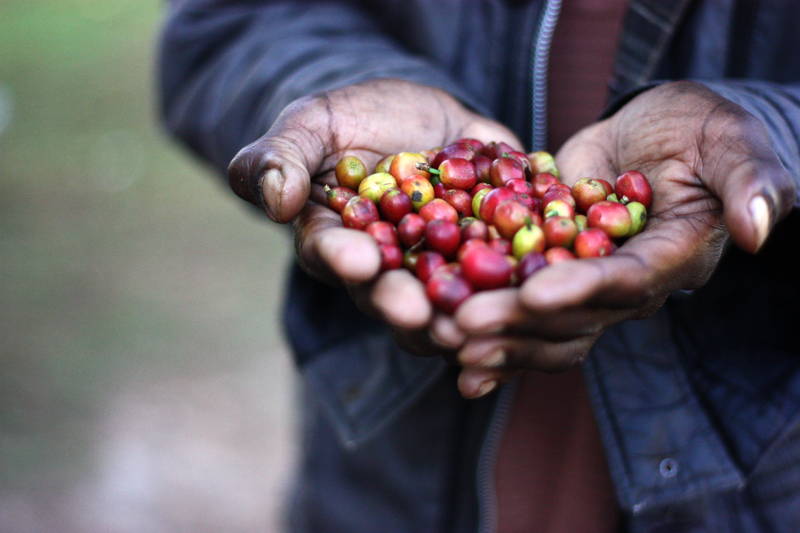
The history of coffee
Coffee has become an integral part of our everyday lives. Yet we know little about how coffee actually became so normal for us. Many myths surround the origins of coffee. In the following, we will stick to the historical facts – the story is exciting enough.
It is recognised that the coffee plant originates from Ethiopia. According to legend, the coffee plant was discovered by the shepherd Kaldi, whose goats jumped around after eating the red coffee cherries. Coffee was first mentioned in the Kaffa region in southwestern Ethiopia as early as 900 AD. At that time, the leaves and dried cherries were infused in hot water, similar to tea, and then drunk. Only later, when coffee reached the Ottoman Empire through the Arab world and later Istanbul, did the preparation already correspond more closely to its present form. The raw, dry seeds (because, strictly speaking, they are not beans) were roasted, finely ground and boiled several times in water.

The first coffee houses opened in Istanbul in the 16th century. For coffee drinkers in the Ottoman Empire of the time, however, coffee consumption was anything but a „coffee party“. Under the ruler Murad IV, coffee was even forbidden, coffee houses were torn down and coffee drinkers were persecuted and punished. Surprisingly, the Bavarians were not only born with a feeling for good beer, we also have an Augsburg physician to thank for the first coffee records, who travelled through the Middle East in 1582. Other travellers brought coffee back to Europe as a souvenir. This „souvenir“ was particularly popular with us Europeans, so that coffee houses opened in Venice as early as the 17th century, followed by London, Vienna and finally Paris. The first German coffee house opened its doors in Bremen in 1673; Berlin followed in 1721.

The three waves of coffee
Coffee grows in the highlands of the (sub-) tropics; more precisely in mountainous countries along the equator such as Ethiopia and Colombia. But the most distinctive coffee cultures are in Europe, the United States and, surprisingly, above all Japan. Here there is a very differentiated coffee culture. More coffee is now imported into Japan than into Italy or France. Among the producing countries, Brazil and Ethiopia are exceptions. Brazil consumes the second largest amount of coffee after the USA, and Ethiopia has the largest own consumption of all coffee countries in terms of harvest volume. Here, the whole family celebrates the coffee ceremony up to three times a day. Learn more about Ethiopia as a coffee country ›
Coffee cherries are given as much attention and respect as grapes at harvest time in some places
Coffee has long been traded like grain and soya. But now, in some places, coffee cherries are treated with as much attention and respect as grapes in the wine harvest. From the development of the last few years, we can deduce a clear trend. First there was the wave of mass-market coffees, then the second wave around contemporary coffee houses. Today, the countries of origin, the diverse flavours and different cultivation methods are becoming more and more important for coffee connoisseurs. This is what we stand for at Coffee Circle ›



